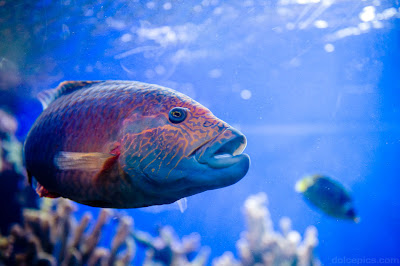Despite it name, the Killer Whale (Orca) is actually a type of dolphin.

Scientific classification
Kingdom: Animalia
Phylum: Chordata
Class: Mammalia
Order: Cetacea
Suborder: Odontoceti
Family: Delphinidae
Genus: Orcinus, Fitzinger, 1860
Species: O. orca
Orcas, or killer whales, are the largest of the dolphins and one of the world's most powerful predators. They feast on marine mammals such as seals, sea lions, and even whales, employing teeth that can be four inches (ten centimeters) long. They are known to grab seals right off the ice. They also eat fish, squid, and seabirds.
Though they often frequent cold, coastal waters, orcas can be found from the polar regions to the Equator.
Killer whales hunt in deadly pods, family groups of up to 40 individuals. There appear to be both resident and transient pod populations of killer whales. These different groups may prey on different animals and use different techniques to catch them. Resident pods tend to prefer fish, while transient pods target marine mammals. All pods use effective, cooperative hunting techniques that some liken to the behavior of wolf packs.
Whales make a wide variety of communicative sounds, and each pod has distinctive noises that its members will recognize even at a distance. They use echolocation to communicate and hunt, making sounds that travel underwater until they encounter objects, then bounce back, revealing their location, size, and shape.
Killer whales are protective of their young, and other adolescent females often assist the mother in caring for them. Mothers give birth every three to ten years, after a 17-month pregnancy.
Orcas are immediately recognizable by their distinctive black-and-white coloring and are the intelligent, trainable stars of many aquarium shows. Killer whales have never been extensively hunted by humans.

Killer whale behavior is generally foraging, traveling, resting and socializing. Killer whales are often active on the surface involved in acrobatic behavior, such as violations, spyhopping, and tail-slapping. These activities may have different purposes, such as court, communications, parasite expulsion, or play. Spy-hopping, a behavior in which a whale keeps his head above water, helps the animal to check its surroundings. Like all whales, Killer whale are highly dependent on underwater sound for orientation, power, and communications. Killer whale produce three categories of sounds: clicks, whistles and pulsed calls. Clicks are believed to primarily be used for navigation and discriminating prey and other objects in the environment, but are often heard during social interactions.



Comments
Post a Comment